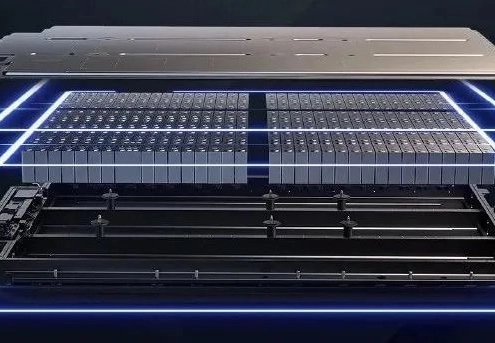How to Build a Golf Cart Battery with 3.7v Batteries
Table of Contents
- How to Build a Golf Cart Battery with 3.7v Batteries
Creating a custom golf cart battery using 3.7v batteries can be a cost-effective and efficient way to meet specific power needs. This guide will walk you through the process of building a reliable battery pack step-by-step. Understanding how to assemble a battery pack using 3.7v batteries requires knowledge of electrical configurations like 2s2p battery configuration, 4s2p battery setups, and ensuring the correct balance for performance and safety.
Step 1: Determine Your Golf Cart’s Voltage and Capacity Needs
The first step in building a custom battery pack is determining the required voltage and capacity (measured in amp-hours or Ah). Most golf carts use 36V, 48V, or 72V systems. The voltage requirement depends on your golf cart’s motor, while the capacity (Ah) will determine how long the battery lasts between charges. For a 48V system, you will need 13 cells in series to reach the desired voltage since 3.7V x 13 = 48.1V. For a 36V system, 10 cells in series will achieve the desired 37V.
To further customize the golf cart batteries 48 volt system, consider the energy needs based on your driving habits and terrain. If you need a long-lasting battery, aim for a high Ah rating. For example, a 48v lithium golf cart battery kit might include batteries with a capacity of 100Ah or more.
Step 2: Choose the Right Battery Configuration
When building a battery pack, you can connect cells in series, parallel, or a combination of both. The two main configurations are:
- Series (S) Configuration: Increases voltage. For example, a 2s2p battery configuration means two cells are connected in series and then paralleled with another identical series pair. This setup is ideal for increasing voltage without altering the capacity.
- Parallel (P) Configuration: Increases capacity. For a 4s2p battery configuration, you would have four cells in series, which are then paired with another four cells, doubling the capacity.
Step 3: Plan Your Battery Layout
Battery layout is crucial in ensuring a safe and efficient setup. Using 3.7 v battery sizes like the common 18650 cells, you can easily build a compact battery pack. For a 48V 100Ah battery pack, you will need 13 cells in series, with each series connected in parallel to achieve the desired capacity. This means if each 3.7v battery cell has a capacity of 2.5Ah, you will need 40 parallel connections to reach 100Ah (100Ah ÷ 2.5Ah = 40).
Example Configuration for a 48V 100Ah System:
- 13 cells in series (to reach 48.1V)
- Each series connection with 40 parallel cells (to reach 100Ah)
- Total number of cells: 13 x 40 = 520 cells
Step 4: Gather the Necessary Components
To build your battery pack, you will need high-quality 3.7v batteries, a battery management system (BMS), nickel strips for connections, and appropriate wiring. The BMS is essential to prevent overcharging, over-discharging, and to balance the voltage across all cells. Ensure you have a BMS rated for your voltage and capacity.
Required Components:
- 3.7v batteries (e.g., 18650 cells)
- Battery Management System (BMS)
- Nickel strips or other conductors
- Spot welder for joining nickel strips to battery terminals
- Insulation and a sturdy outer casing to house the cells
Step 5: Assemble the Battery Pack
- Set Up the Series Configuration: Lay out 13 cells in series. Use nickel strips and a spot welder to connect the positive terminal of one cell to the negative terminal of the next. This setup will increase your voltage while maintaining the same capacity.
- Create the Parallel Configuration: After connecting the series strings, combine multiple series strings in parallel to boost capacity. For example, connecting four series strings in parallel will result in a 4s2p battery configuration, enhancing both voltage and capacity.
- Install the BMS: The BMS should be connected to each series group to monitor voltage levels and ensure all cells are balanced. This is crucial when building a 72v lithium golf cart battery or other high-capacity battery packs.
- Test the Battery Pack: Before installing your custom golf cart batteries 48 volt, test the pack for voltage consistency and capacity. Charge the pack fully and ensure there is no significant voltage drop between cells.
Step 6: Install the Battery in Your Golf Cart
Once the battery pack is assembled and tested, install it in your golf cart. Use heavy-duty wiring and connectors suitable for high current loads. Make sure all connections are secure and insulated properly to prevent shorts and other electrical issues.
For golf cart enthusiasts looking to modify or upgrade their carts, building a custom battery pack with 3.7v batteries offers a unique opportunity to optimize performance. By understanding configurations like 2s2p battery configuration and using high-quality components like djy li-ion battery cells, you can create a durable and powerful battery pack suited to your specific needs.
With the right approach and attention to detail, you can successfully build your own 48v lithium golf cart battery kit or even experiment with a 72v lithium golf cart battery system for maximum power and efficiency.






